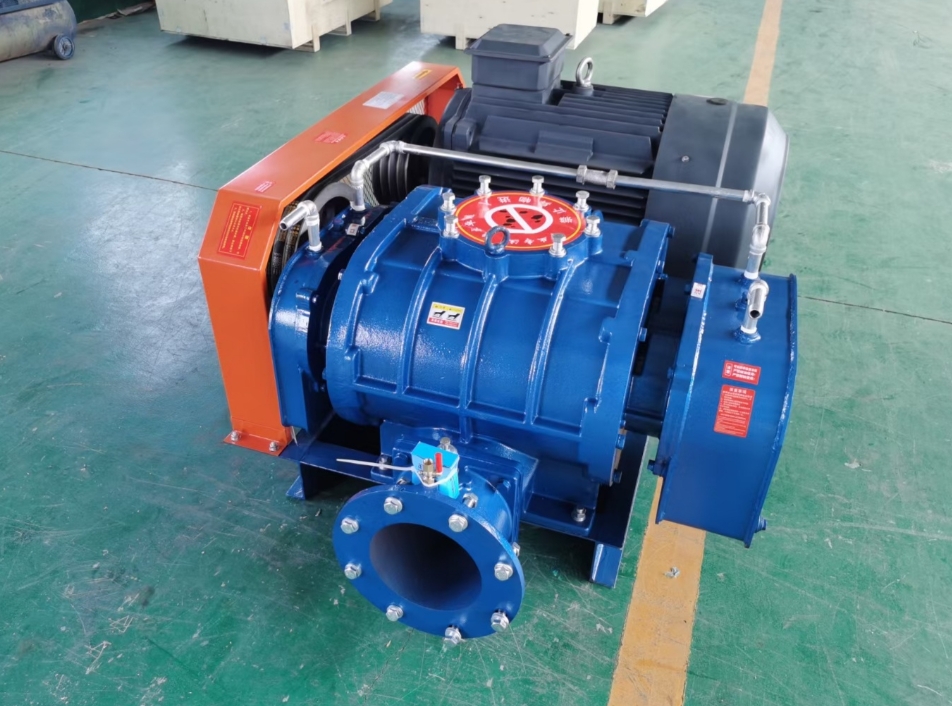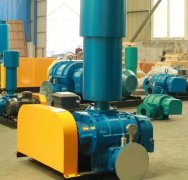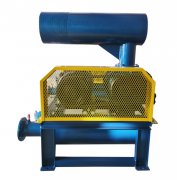Introduction to air volume and pressure of Roots blower
The air volume and pressure of Roots blower are two important performance parameters, which are crucial for understanding the performance of the blower, selecting suitable application scenarios, and ensuring the normal operation of the equipment. The following is a detailed introduction to the air volume and pressure of Roots blowers:
1、 Airflow (Q)
1. Definition: The air volume of a Roots blower refers to the volume of gas passing through the blower per unit time. Usually expressed in cubic meters per minute (m3/min) or cubic feet per minute (CFM).
2. Influencing factors:
① Model and specifications: Different models of Roots blowers have different air volume ranges. For example, a small Roots blower may only have a few hundred cubic meters per hour of air flow, while a large or specially customized Roots blower can reach tens of thousands of cubic meters per hour or even higher.
② Speed: The speed of the Roots blower also affects its air volume. Generally speaking, the higher the rotational speed, the greater the air volume. However, it should be noted that excessive rotational speed may lead to fan overload or increased wear, so it is necessary to control the rotational speed reasonably in practical applications.
③ Import and export area: The import and export area of the fan will also affect its air volume. By adjusting the inlet and outlet area, the air volume of the fan can be changed to some extent.
3. Importance: Airflow is an important basis for selecting Roots blowers. In practical applications, suitable Roots blower products should be selected according to specific needs and scenarios to ensure that the equipment can operate normally and achieve the expected results.
2、 Wind pressure (P)
1. Definition: Wind pressure refers to the gas pressure generated by a fan, usually expressed in pascals (Pa) or millimeters of water column (mmH2O). The magnitude of wind pressure directly affects the distance and height of gas transportation.
2. Influencing factors:
① Impeller design: The impeller design of Roots blower is one of the key factors affecting its wind pressure. Different shapes, quantities, and arrangements of impellers will produce different wind pressure effects.
② Speed: Similar to air volume, the speed of a Roots blower also affects its air pressure. Generally speaking, the higher the rotational speed, the greater the wind pressure generated. However, it is also important to pay attention to the negative effects that may arise from excessively high rotational speeds.
③ Gas density: The density of the transported gas also affects the wind pressure of the fan. The higher the density, the greater the required wind pressure.
3. Importance: When selecting a Roots blower, the required air pressure should be determined based on the distance and height of the gas to be transported. Insufficient wind pressure may cause gas to be unable to be delivered smoothly to the target location, while excessive wind pressure may lead to equipment overload or increased energy consumption.
3、 The relationship between air volume and wind pressure
In the practical application of Roots blowers, there is often a relationship between air volume and air pressure. Generally speaking, when the air volume increases, the air pressure may decrease accordingly; On the contrary, when the wind pressure increases, the air volume may also decrease accordingly. This is because the performance of Roots blowers is limited by their structure and working principle. Therefore, when selecting, it is necessary to balance the relationship between air volume and air pressure according to specific application scenarios and requirements.
4、 Summary
The air volume and pressure of Roots blower are two important performance parameters, which are crucial for understanding the performance of the blower, selecting suitable application scenarios, and ensuring the normal operation of the equipment. When selecting, suitable Roots blower products should be chosen based on specific needs and scenarios, and parameters such as speed and inlet/outlet area should be reasonably controlled to adjust air volume and pressure. At the same time, attention should be paid to factors such as the installation position, exhaust method, and noise of the fan to ensure its normal operation and working environment.



